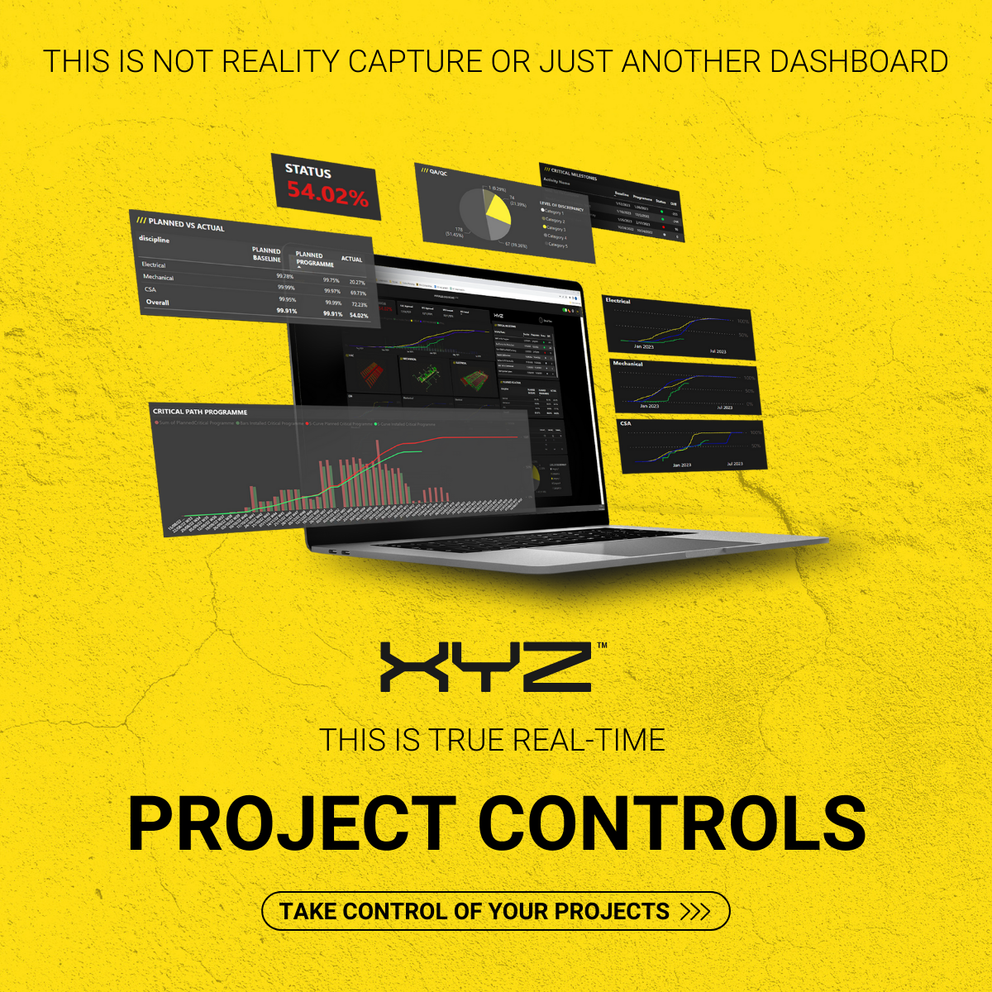-
Services
Services
Find out how we work with our clients and deliver value to construction projects from day one
-
Solutions
Solutions
Discover how all our solutions sync together to deliver construction's most powerful BIM platform to date
-
Built for
Built for
-
Industry
Industry
Understand how we support construction's biggest sectors, and hear from our clients who have experienced the power of XYZ
-
Resources
Resources
Get stuck into all our latest thought leadership, news, reports and industry leading content
-
Company
Company
Dive into what makes XYZ tick, unearth why construction is in our DNA and why we are world leaders in AR solutions

Insights
Why Is BIM Replacing CAD?

02 May 2023
Building Information Modeling (BIM) as a technique for construction design and collaboration is steadily replacing the use of Computer-Aided Design (CAD). This article explores the cause behind BIM's emergence and its rising dominance over the use of conventional CAD methods.
We’ll also take a look at how construction businesses can benefit from the use of XYZ BIM.
The rise of BIM
Unlike CAD, which is mainly concerned with the creation of 2D and 3D models, BIM extends beyond basic visualization and geometric modeling.
It combines data and information from several sources into a centralized model, allowing project stakeholders to collaborate in a highly coordinated fashion. Architects, engineers, contractors, and other professionals can work together more effectively in real time, reducing the risk of mistakes and clashes throughout the design and construction phases.
It’s not hard to see why BIM has gained popularity. Construction projects are often highly complex, involving many moving parts that must be effectively coordinated for proper execution. BIM has arisen as a solution to combat the industry’s main pain points, helping with communication and clash mitigation.
BIM platforms like the one by XYZ Reality allow you to execute projects as they’re planned. You can create, visualize, validate, assign, and manage issues on the XYZ BIM Viewer, improving overall project collaboration by bringing teams together.
The benefits of BIM
So what benefits does BIM provide in the planning and building of structures?
Improved collaboration
One of the most significant benefits of BIM over CAD is its ability to facilitate improved collaboration and coordination. Team members can work on various areas of a project at the same time using BIM. This real-time interaction keeps everyone on the same page, lowering the possibility of clashes and miscommunication to boost overall project results.
Data integration
BIM has the capacity to incorporate large amounts of data into the modeling process. While CAD is mainly concerned with graphical representation, BIM includes critical information like cost projections, material specifications, energy analyses, and maintenance schedules.
This information-rich method enables project stakeholders to make well-informed decisions and assess the effect of design modifications on numerous project metrics.
The AtomTM headset by XYZ allows for better data management. Using the headset with the XYZ Platform means maximized transparency, as remote collaboration lets stakeholders work together regardless of their physical location.
Minimization of error and less rework through clash detection
Traditional CAD models make predicting clashes between various construction aspects difficult. BIM, on the other hand, helps with conflict detection, aiding in the identification and resolution of potential clashes before the start of construction.
BIM's proactive conflict identification enhances project efficiency and cost-effectiveness dramatically, as it minimizes the risk of error and reduces the need for costly rework. It does so by taking into consideration the interconnections between different building components, such as mechanical, electrical, plumbing, and structural systems.
Risk mitigation and efficiency maximization
BIM not only detects clashes, but also mitigates risk by modeling and assessing prospective construction challenges. BIM helps detect and resolve possible hazards on building sites by digitally testing the construction process and assessing its viability, considering facets like sequencing, logistics, and safety measures.
Better lifecycle management from design to operation
Data-rich BIM models function as great resources for facility managers. By connecting BIM models with Facility Management Systems (FMS), facility managers have access to information like maintenance schedules, equipment specifications, and energy usage statistics. The result: better project lifecycle management.
Why the construction industry is embracing BIM as a replacement
The clear benefits of BIM over CAD are driving its rising acceptance in the construction sector. BIM's capability to improve collaboration and coordination, data integration, conflict detection, risk mitigation, and lifecycle management make it an appealing alternative for industry professionals.
The industry-wide transition from CAD to BIM symbolizes a methodical shift in project management that emphasizes efficiency, accuracy, and long-term value. BIM is being acknowledged as a more complete and integrated approach to project delivery, resulting in better-designed buildings, enhanced construction processes, and efficient facility management.
BIM: a revolutionary solution to the industry’s struggles
BIM is increasingly replacing CAD in the construction industry, and the benefits of BIM outlined in this article are just some of the few reasons.
While the construction industry is notorious for its slow adaptation and low adoption rates of technology and new methodology, BIM has proven to be a beneficial solution that has the potential to revolutionize the construction industry.
The usage of BIM has seen improved project stakeholder coordination, better decision-making based on data-rich models, decreased mistakes and rework, enhanced project planning, and easier facility management.
Supercharge your construction projects with XYZ Reality's revolutionary Atom headset and BIM solutions. View, position, and inspect holograms of your built models onsite to millimeter accuracy. With XYZ, you can more seamlessly collaborate and bid farewell to unnecessary reworks.







